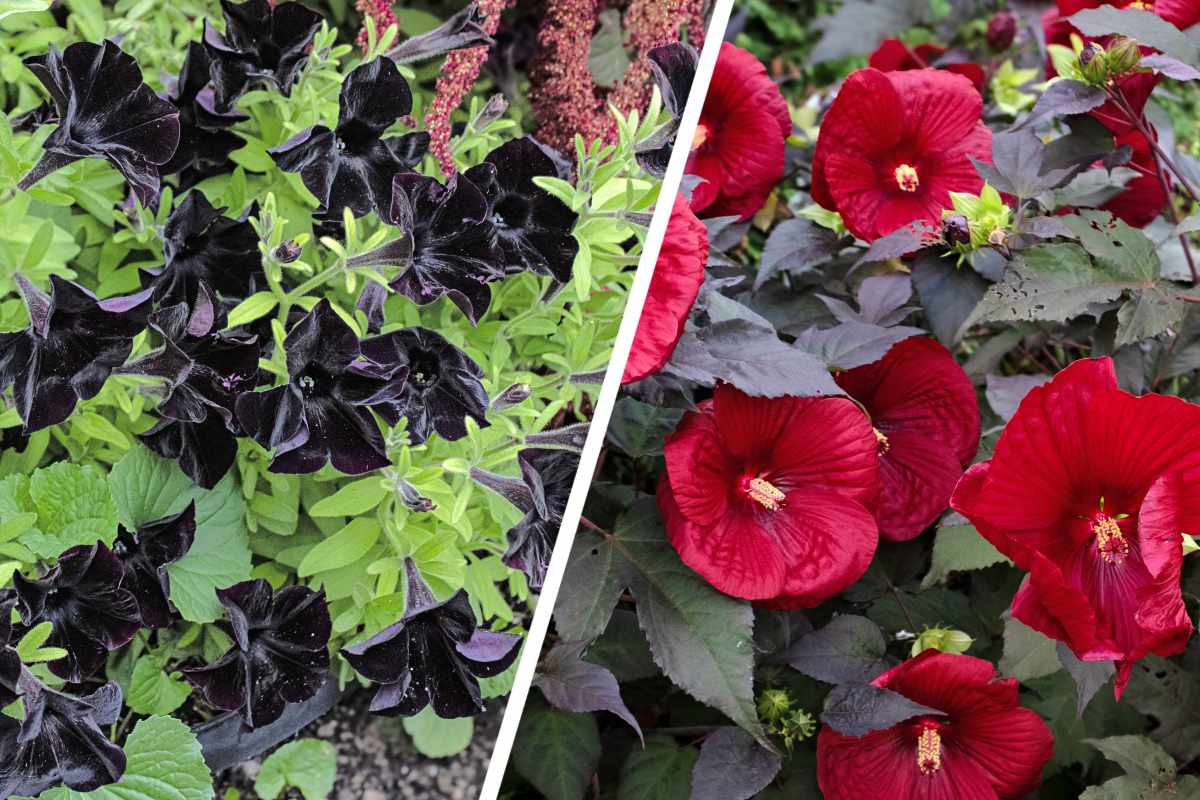
‘Back in Black’ sedum with dark foliage, ‘Black Mamba’ petunias with black petals, and even common plants such as lavender — these make some of the best flowers for goth gardens.
To help us choose the 13 best flowers and other plants for your goth garden, we’ll share expert advice from a goth garden owner, a plant specialist, and a writer with expertise in goth gardens.
If you’d rather have a helping hand to breathe life into your hallowed space, consider hiring someone with experience. A landscaping pro knows which plants thrive in your area and the best time to plant them for a healthy, thriving goth garden.
Read More: If you want to learn more about goth gardens and how to get yours started, check out our article: Keep Your Yard Creepy Year-Round with a Goth Garden.
Best Trees and Shrubs for Goth Gardens
Trees and shrubs provide a solid foundation for any garden, but our selections provide a darker, moodier ambiance. With dark leaves, twisted trunks, and impressive blooms, consider these selections for your spooky space.
1. ‘Midnight Marvel’ Hibiscus
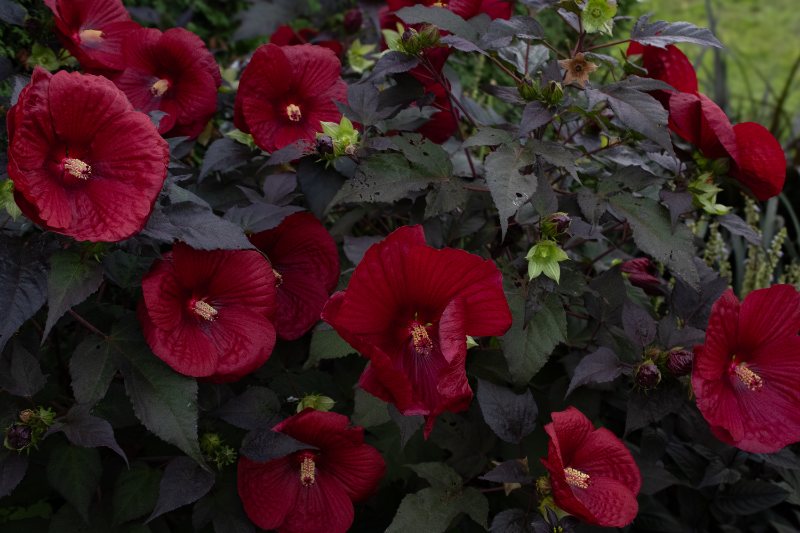
- Latin name: Hibiscus ‘Midnight Marvel’
- USDA Zones: 4 to 9
- Growing conditions: Prefers moist, rich soils but can adapt to drier soils. Prefers full sun and has moderate to high water needs.
- Mature size: 3 to 4 feet in height and width
- Blooming time: Midsummer to early fall
With large, striking red flowers that contrast against the dark red foliage, ‘Midnight Marvel’ hibiscus is a statement piece in any garden. Place this compact shrub at the front of a border for a true showstopper.
For Chloe Hurst, owner of The Goth Garden Instagram page, ‘Midnight Marvel’ is a perfect choice for those who want to add some drama to their gardens: “For … dramatic blooms, I suggest ‘Midnight Marvel’ and ‘Cookies and Cream’ hibiscus.” With nearly black foliage and large, dinner plate-sized blooms, these flowers resemble Dracula’s cape or a full moon, she says.
2. Harry Lauder’s Walking Stick
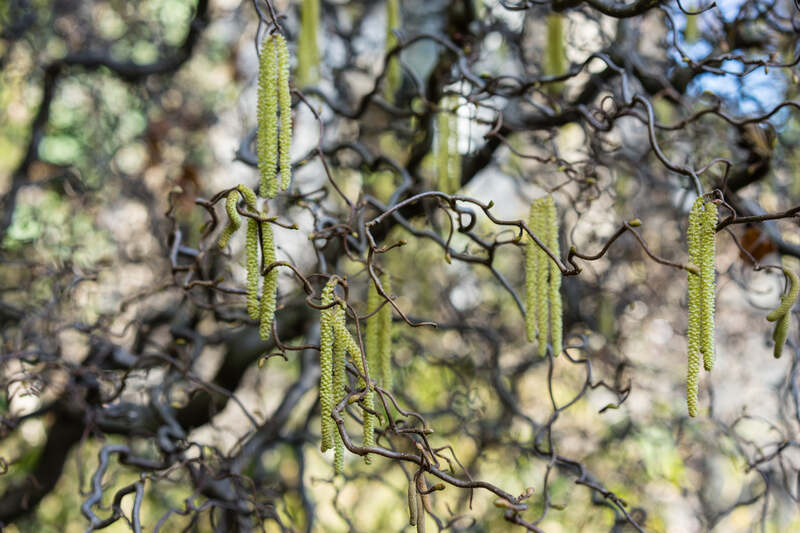
- Latin name: Corylus avellana ‘Contorta’
- USDA Zones: 4 to 8
- Growing conditions: Prefers rich, well-drained but moist soils, in full sun to partial shade
- Mature size: 8 to 10 feet in height and width
- Blooming time: Spring
Harry Lauder’s walking stick has unique, contorted stems that look like something out of a Tim Burton movie. In the spring, yellow catkins hang from the tree’s crooked stems and sway in the wind, contributing to its eerie vibe.
Diane Blazek, executive director of the National Garden Bureau, suggests combining this tree with hardscaping elements such as paths or sculptures. Tall and unique, this tree adds a vertical element to your garden while giving it a mysterious atmosphere. “Harry Lauder’s Walking Stick lends a quirky, spooky height element” to your garden, she says.
3. ‘Summer Wine’ Ninebark
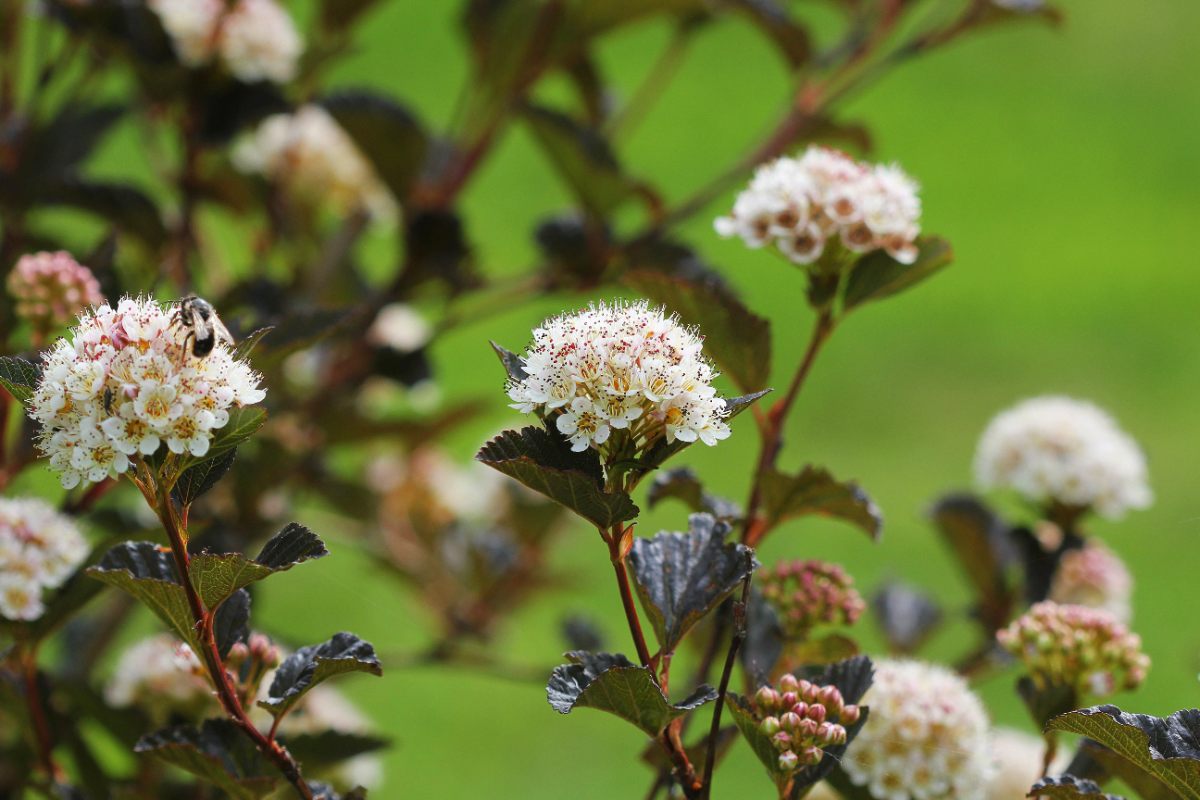
- Latin name: Physocarpus opulifolius ‘Summer Wine’
- USDA Zones: 3 to 8
- Growing conditions: Prefers well-drained, average, slightly acidic soils in full sun. In the South, plant in partial shade.
- Mature size: 5 to 6 feet tall and wide
- Blooming time: Spring
With black, delicate foliage, ‘Summer Wine’ ninebark is a beautiful shrub to add to any border or can even be grown as a small flowering tree. In spring, the real show starts: Showy clusters of delicate white flowers bloom, creating a beautiful contrast against the dark foliage.
For Hurst, ninebark is a must-have in goth gardens. In addition to ‘Summer Wine’, she also suggests other varieties, such as ‘Panther’, ‘Little Devil’, and ‘Fireside’.
4. Castor Bean
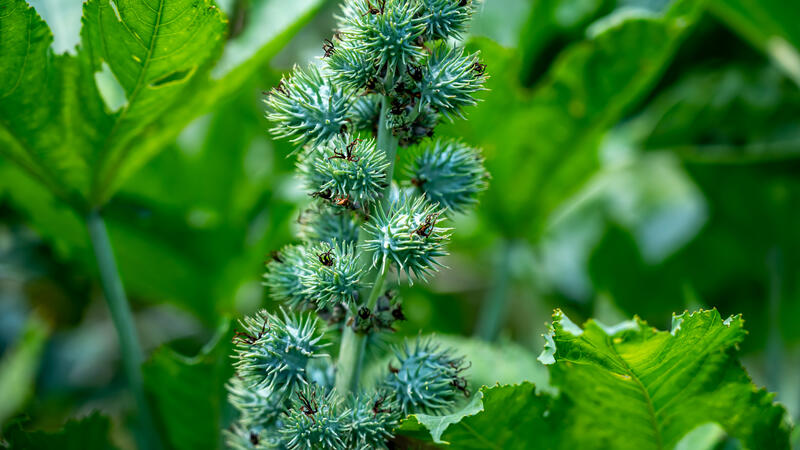
- Latin name: Ricinus communis
- USDA Zones: 9 to 11
- Growing conditions: Rich, moist soils and full sun
- Mature size: 6 to 10 feet
- Blooming time: Summer and fall
Castor bean is a fast-growing plant that can be added to your goth poison garden as a container plant, specimen, or hedge. But be cautious: Castor bean is considered an invasive species in some states and is incredibly poisonous.
Though it’s a little high-risk for most gardeners, castor bean is a favorite of Felicia Feaster, writer of the book “The Goth Garden: The Mystery, Beauty, and Lore of Dark Gardening”: “I love castor bean, which has sinister-looking palmate leaves and bizarre bright red seed pods on red stalks. This annual (see Note below) is exceedingly easy to grow in containers or in the ground.”
She continues: “In addition to its dramatic appearance, it contains the incredibly deadly toxin ricin, which is 6,000 times more poisonous than cyanide (again, keep castor bean away from little hands and paws). How’s that for goth?”
Note: In zones 9 to 11, castor bean can be grown as an herbaceous perennial (foliage dies back, but will regrow the following year). Farther north, it’s an annual, but reseeds readily.
Best Perennial Flowering Plants for Goth Gardens
Alongside trees and perennial shrubs, flowering perennial plants provide a low-maintenance source of recurring color and interest in a goth garden.
5. ‘Dark Side of the Moon’ Astilbe
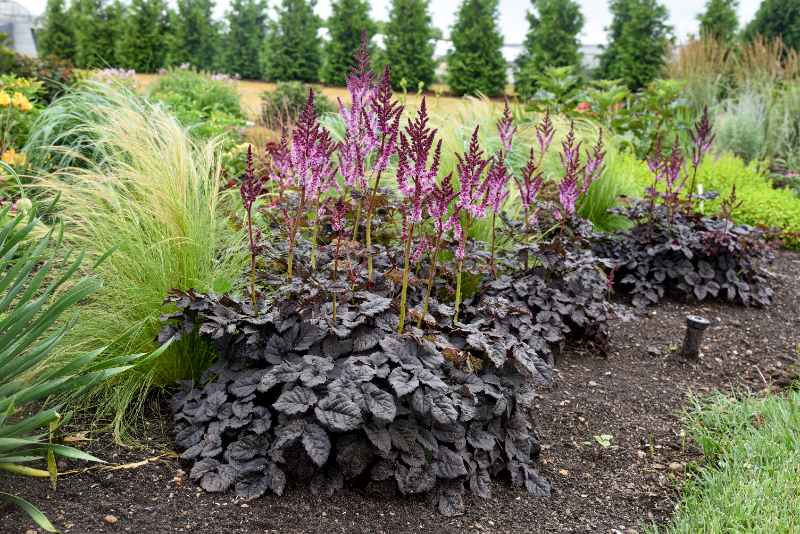
- Latin name: Astilbe ‘Dark Side of the Moon’
- USDA Zones: 4 to 9
- Growing conditions: Average, rich, moist soils under light shade to partial sun
- Mature size: 20 to 22 inches tall and 2 feet wide
- Blooming time: Summer
Planted as a container plant, border, or in mass plantings, this Astilbe hybrid has tall, upright flowering stems that bloom in different shades of pink. The foliage has a deep, rich brown color. If you want a more delicate, Victorian-themed, or soft goth color palette, this variety is the perfect choice.
6. ‘Back in Black’ Sedum
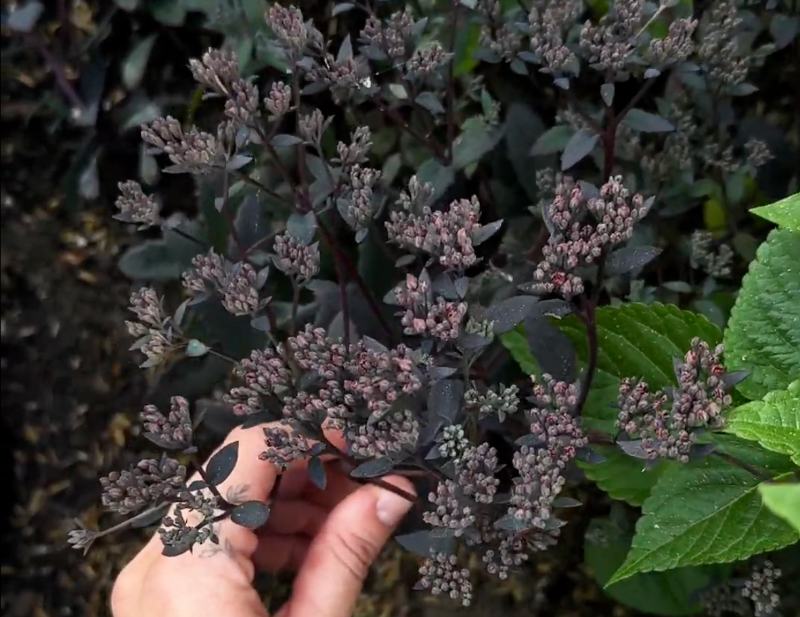
- Latin name: Sedum ‘Back in Black’
- USDA Zones: 3 to 9
- Growing conditions: Full sun and well-drained, poor to average soils
- Mature size: 2 feet tall and 2 1/2 feet wide
- Blooming time: Late summer through fall
With beautiful black foliage, the flowers on this Sedum hybrid bloom from late summer through fall with cream-colored petals. According to Hurst, who is a fan of sedum cultivars, they are also a great option for those aiming for a pollinator-friendly garden while maintaining the dark goth aesthetic.
She also suggests other varieties that can suit your goth garden: “Any dark sedum, like ‘Night Embers’, ‘Back in Black’, ‘Dark Magic’, ‘Plum Dazzled’, etc., are huge essentials in my garden, and the bees absolutely love it! They’re fantastic for layering in between taller (and smaller) plants.”
See Related:
- How to Build a Pollinator Garden
- Top 10 Native Plants for Your Pollinator Garden
- How to Build a Bee Lawn to Help Pollinators
7. ‘Dark Chocolate’ False Indigo
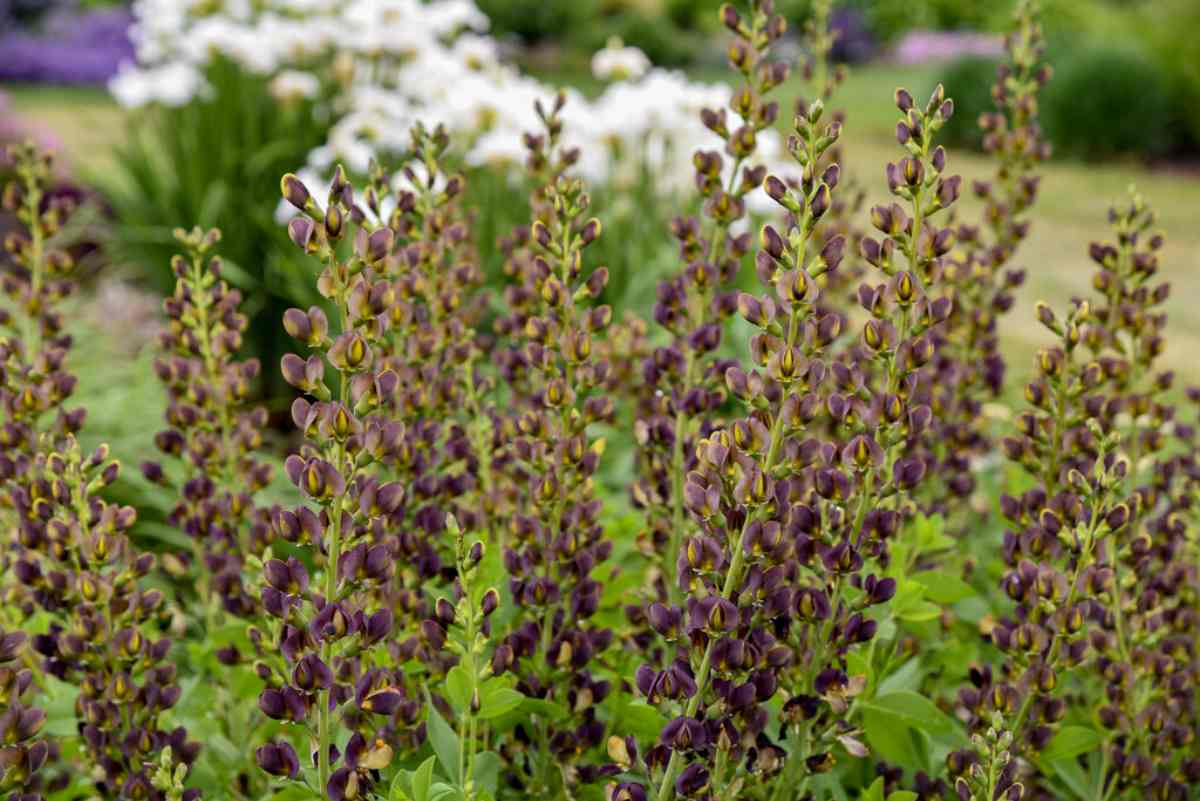
- Latin name: Baptisia ‘Dark Chocolate’
- USDA Zones: 4 to 9
- Growing conditions: Well-drained, dry to medium, average soils and full sun
- Mature size: 2 to 3 feet tall and wide
- Blooming time: Late spring to early summer
‘Dark Chocolate’ false indigo has long stems that stand upright with pea-shaped black-purple petals that look like little chocolates. Smaller in size, this false indigo hybrid works perfectly for urban environments. In the fall, the charcoal-black seedpods will add sinister interest to your goth garden all the way into winter.
8. ‘Blacknight’ Hollyhock
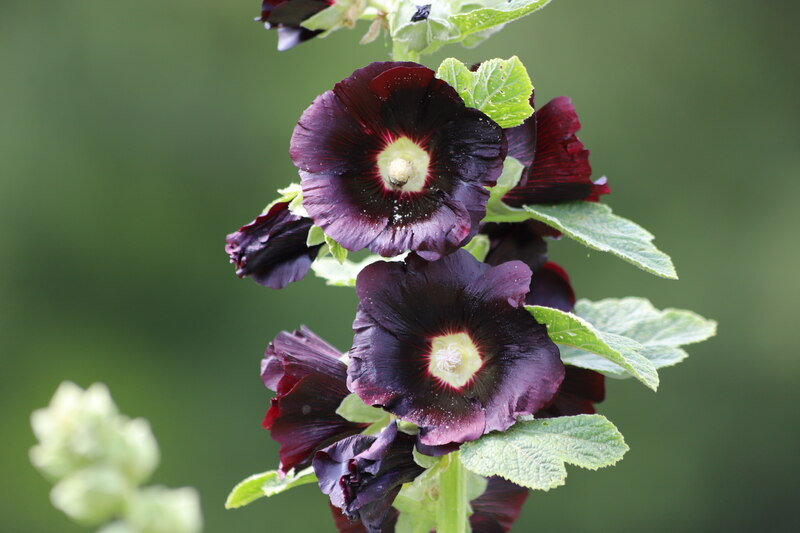
- Latin name: Alcea rosea ‘Blacknight’
- USDA Zones: 3 to 9
- Growing conditions: Prefers full sun but tolerates some light shade. Well-drained, fertile soils.
- Mature size: 5 to 6 feet tall and 1 to 2 feet wide
- Blooming time: Summer
‘Blacknight’ hollyhock produces lovely flowers that vary slightly in tone from black to a deep brown-purple hue. Tall and elegant, it works wonderfully when planted at the back of a border or against a wall or fence.
9. Rosemary

- Latin name: Salvia rosmarinus
- USDA Zones: 8 to 10
- Growing conditions: Slightly acidic, well-drained soils in full sun
- Mature size: 4 to 5 feet tall and 3 to 4 feet wide
- Blooming time: Spring and summer
You don’t need exotic varieties and cultivars to start your goth garden. Although it’s a common home garden herb, rosemary adds an artistic touch to goth gardens, says Feaster.
“Both rosemary and English lavender, because of their slightly silvery color and interesting form, offer great contrast with darker, more obviously goth plants,” she says.
10. English Lavender
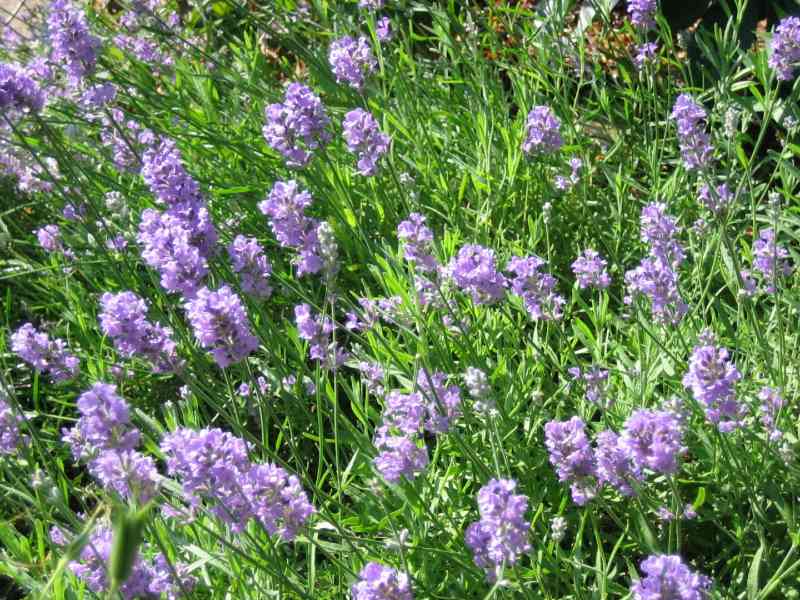
- Latin name: Lavandula angustifolia
- USDA Zones: 5 to 9
- Growing conditions: Well-drained to dry soils in full sun
- Mature size: 1 to 2 feet tall and 2 to 3 feet wide
- Blooming time: Summer
Also recommended by Feaster and great for goth gardening beginners, lavender, like its cousins from the mint family, adds a soft, pleasing fragrance to your goth garden.
Not only do rosemary and lavender add texture, color, and interest, Feaster says, “These plants also have a fascinating, story-laden history.”
“Lavender was often crushed with other herbs (including, perhaps, rosemary) and worn inside the beaked masks doctors donned during outbreaks of the bubonic plague in the 17th century. Those herbs were believed to protect them from disease and would also mask the smell of sickness and death.”
See Related: Best Sensory Garden Plants To Stimulate Our 5 Senses
Best Annual Flowering Plants for Goth Gardens
Annual flowering plants provide fleeting beauty for goth gardens and can be a low-risk way to experiment with different plants each year. If you decide a plant isn’t the best fit or doesn’t grow well, swap it out for something else next season.
11. Dracula Celosia
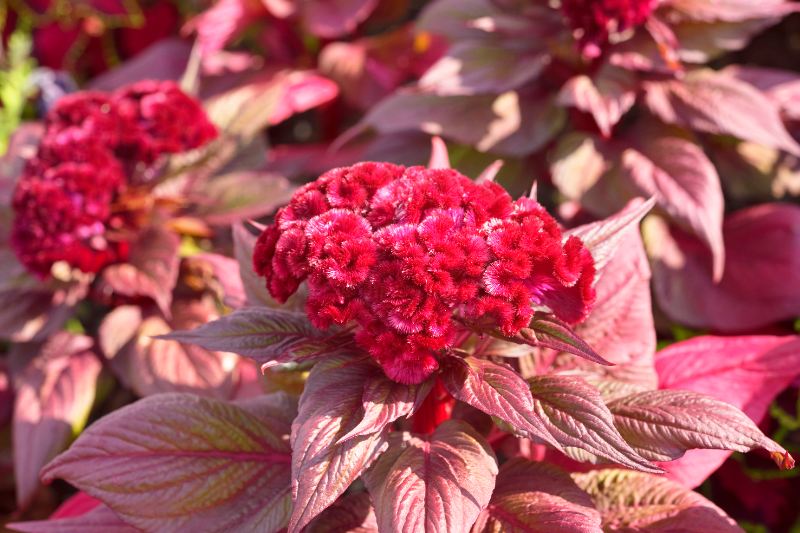
- Latin name: Celosia argentea var. cristata ‘Dracula’
- USDA Zones: 2 to 9 as an annual, 10 to 11 as a perennial
- Growing conditions: Easy to grow, it prefers fertile, moist but well-drained soil. Thrives in full sun.
- Mature size: 16 inches tall and 12 inches wide
- Blooming time: Summer
Although Dracula himself might hide from the sun, this ‘Dracula’ celosia thrives in the hot, sunny summers of the warmer regions of the U.S. (places like southern Florida, southern Texas, the southwestern corner of Arizona, and southern California).
When planted outside under full sun, its foliage acquires a dark-red to purple color, and its unusual flower intensifies in color. With a dramatic shape resembling a cockscomb, Dracula celosia produces a large velvety flower in a deep burgundy color.
Note: Celosias are usually grown as annuals, but they can also be grown as tender perennials in zones 10 and 11.
12. Sorbet ‘Black Delight’ Viola
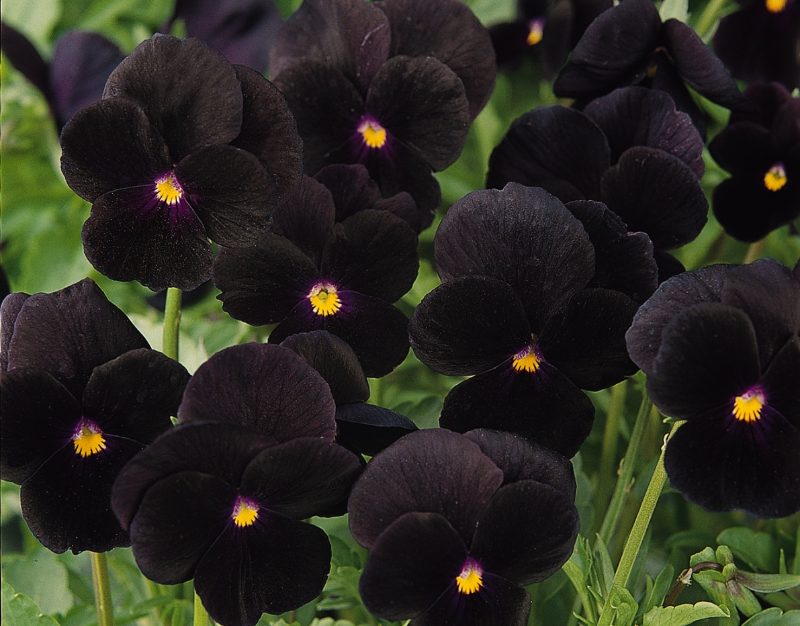
- Latin name: Viola cornuta Sorbet ‘Black Delight’
- USDA Zones: 6 to 11
- Growing conditions: Moderately moist soils in full sun to partial shade
- Mature size: 6 to 8 inches tall and wide
- Blooming time: Early spring to winter (may stop blooming in the summer heat)
One of Blazek’s essential additions to a goth garden, the Sorbet ‘Black Delight’ viola is the perfect choice to add winter interest to your garden. With a long blooming season, this plant blooms in early spring and can last all the way into the winter. Just imagine its beautiful black petals against the stark white snow. What a view!
Feaster also suggests another viola variety: “‘Back to Black’ viola is also a lovely plant, easy to grow, and its deep, almost black color combined with the viola’s charming little faces, makes this a great one for any beginner goth gardener.”
Note: Viola cornuta is typically grown as an annual in the hottest zones (10 and 11) and requires some shade during the summer in these zones. It is also grown as a winter-hardy perennial in zones 6 to 9.
13. ‘Black Mamba’ Petunia
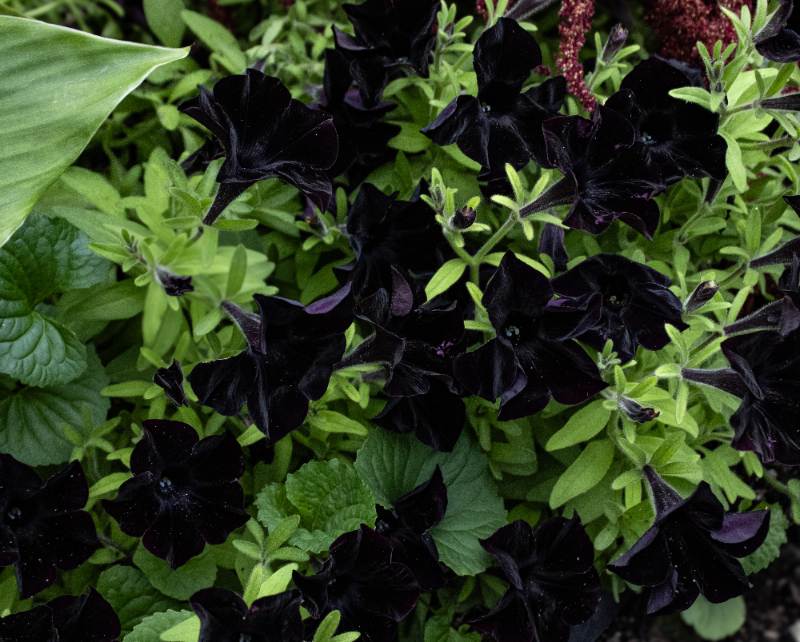
- Latin name: Petunia ‘Black Mamba’
- USDA Zones: 2 to 8 as an annual, 9-11 as a perennial
- Growing conditions: Prefers moderately moist, well-drained soil in full sun to part shade
- Mature size: 10 inches tall, 12 inches wide
- Blooming time: May to frost
With deep, truly black petals, ‘Black Mamba’ petunias are a must for goth gardens. The petals have a velvety texture that is delightful to look at, matching perfectly with the black velvet dresses typical in any goth fashionista’s closet. Growing vigorously, they are perfect to fill hanging baskets and containers.
Hurst explains that they were how she started her own goth garden: “Black Mamba Petunias (are) also a staple in my garden, and actually were the first flowers I ever added to my goth garden! They’re a true black flower and super velvety.”
FAQ
It depends greatly on each plant’s needs and the hardiness zones where it can grow. Hurst suggests looking into your hardiness zone as the first step when starting your own goth garden: “I always suggest looking up your own growing zone (I am Zone 5A, for example) and getting a general sense of what you can/can’t grow.”
Hurst advises going to your local nurseries and being patient: “I get all of my plants from my local garden centres and nurseries, and so far it has taken me 7 years to have the collection that I do now. Finding dark plants certainly takes time, as there is no “one-stop-shop” that only sells dark plants; however, the hunt is what makes this hobby so much fun!”
She also warns against buying goth plants from online retailers: “Avoid buying seeds from places like Amazon or Etsy. Most of the listings are of plants that either don’t exist naturally, (have photos that are) AI-generated, or are painfully photo-manipulated to look darker than they really do. You also risk bringing in invasive species that can harm your environment, especially when buying overseas.”
Yes. As Hurst shared earlier, bees love sedum. Blazek also mentions that a goth garden works pretty much as any other garden when it comes to wildlife- and eco-friendly practices: “Cut back on pesticides, use pollinator-friendly plants, and keep in mind that pollinators need early spring pollen sources as well as sources into the fall.”
See Related: Turn Your Yard Into a Certified Wildlife Habitat
Call a Landscaping Pro to Create Your Goth Garden
Having trouble getting your new design started? Call one of our LawnStarter landscaping professionals. Here at LawnStarter, you can count on the best experts in your region to build your landscaping project from the ground up.
Sources:
- Chloe Hurst, content creator and founder of The Goth Garden Instagram page. Personal interview.
- Diane Blazek, executive director of the National Garden Bureau. Personal interview.
- Felicia Feaster, author of “The Goth Garden: The Mystery, Beauty and Lore of Dark Gardening.” Personal interview.
- “Extension Gardener Plant Toolbox.” North Carolina State University.
- “Gardenia: Creating Gardens.” Gardenia.net.“Plant Finder.” Missouri Botanical Garden.
Main Image: Black Mamba Petunias, left, and Midnight Marvel Hibiscus. Photo Credit: Chloe Hurst / The Goth Garden